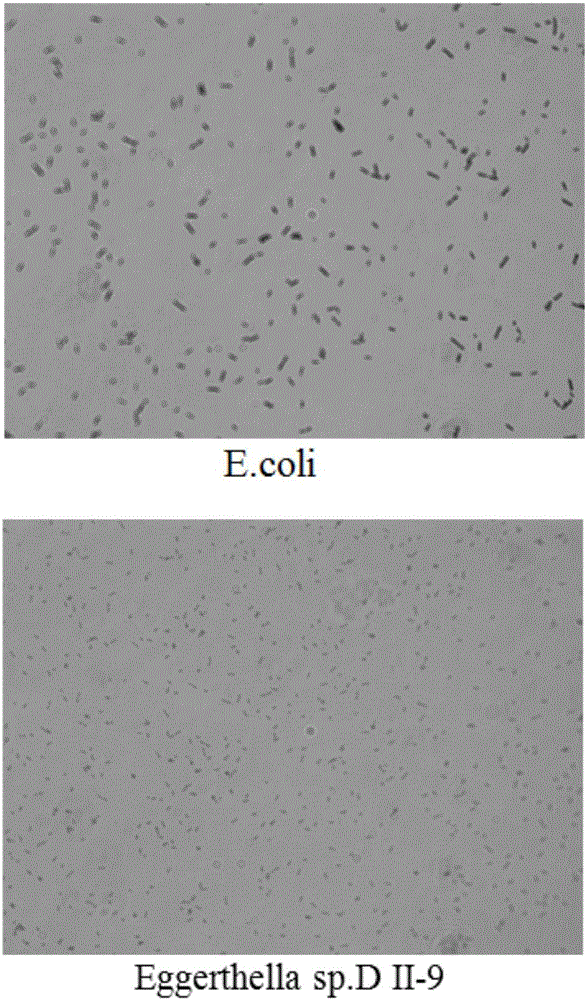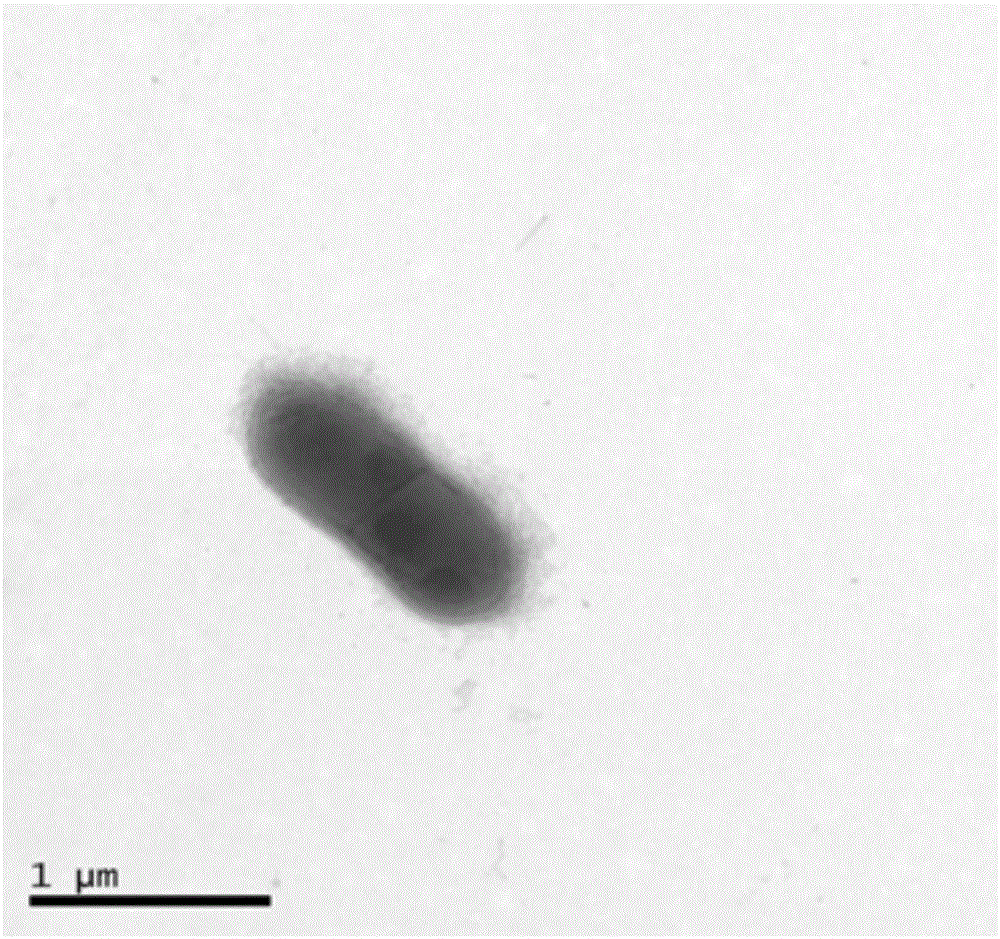Application of Eggerthella sp. D II-9 to degradation of vomitoxin
A technology of Eaglezella and deoxynivalenol, which is applied in the field of mycotoxin degradation, can solve the problem of no microbial report, etc., and achieve the effect of wide range of metabolic temperature and pH value, strong metabolic capacity and stable activity
- Summary
- Abstract
- Description
- Claims
- Application Information
AI Technical Summary
Problems solved by technology
Method used
Image
Examples
Embodiment 1
[0036] Example 1 Analysis of DON deepoxidation metabolism capacity of chicken intestinal microbial mixed flora
[0037] 1. Method
[0038](1) A Wen’s chicken was randomly purchased from the market (the vegetable market around South China Agricultural University), and its carotid artery was cut with a scalpel, causing the chicken to die due to excessive blood loss.
[0039] (2) Dissect the abdomen and take out the cecum, large intestine and small intestine of the chicken, each 3-5cm, and mix the contents of the intestine with L10 medium.
[0040] (3) Stand still for 3-5 minutes, take 100 μl and add it to 900 μl L10 medium, add 10 μl of 10 mg / ml DON stock solution to make the final concentration 100 μg / ml.
[0041] (4) Put the inoculated sample and anaerobic bag into an anaerobic box, and incubate anaerobically at 37°C for 3 days.
[0042] (5) Take a sample of 100 μl, add three times the volume of acetonitrile to the bacterial solution to be extracted, vortex and shake to mix,...
Embodiment 2
[0046] Example 2 Isolation and identification of Eggerthella sp. D II-9
[0047] 1. Antibiotics, gradient dilution, 96-well plate screening
[0048] First, antibiotics, gradient dilution, and 96-well plate screening were performed on the chicken intestinal microbial flora described in Example 1 to obtain enriched flora with DON deepoxidation metabolism ability. The specific method is as follows:
[0049] (1) Use tetracycline, ampicillin, carbenicillin, tylomycin, lincomycin, cephalosporin, cefotaxime, streptomycin, chloramphenicol and other antibiotics to incubate with chicken intestinal microorganisms to screen out an antibiotic Combination: tetracycline + tylomycin + lincomycin + ampicillin, under the conditions of this combination of antibiotics, the growth of non-target bacteria can be greatly inhibited.
[0050] (2) Take the active flora after antibiotic screening as strains, and serially dilute 10 -1 、10 -2 、10 -3 、10 -4 、10 -5 、10 -6 、10 -7 、10 -8 、10 -9 , HP...
Embodiment 3
[0068] Example 3 Optimum conditions for degradation of DON by Eggerthella sp. D II-9
[0069] 1. Temperature analysis
[0070] Set a series of temperature gradients of 20°C, 25°C, 30°C, 35°C, 40°C, 45°C, and 50°C, and take samples at fixed points to detect the metabolic DON.
[0071] The results are attached Figure 5 It was shown that the optimum temperature range for the deepoxidation of DON is 30-45°C.
[0072] Low temperature (50 ℃) will make the bacteria Inactivation, completely loses the ability of deepoxidation to metabolize DON.
[0073] 2. pH analysis
[0074] Set a series of pH gradients of 5.0, 5.5, 6.0, 6.5, 7.0, 7.5, 8.0, 8.5, 9.0, 9.5, 10.0, and take samples at fixed points to detect the metabolic DON.
[0075] The results are attached Image 6 As shown, in the range of pH 5-10, DON is completely converted into DOM-1, but the optimum pH range for deepoxidation of DON is between 6.5-10.0.
[0076] Eaglezella will not lose the activity under acidic condition...
PUM
 Login to View More
Login to View More Abstract
Description
Claims
Application Information
 Login to View More
Login to View More - R&D
- Intellectual Property
- Life Sciences
- Materials
- Tech Scout
- Unparalleled Data Quality
- Higher Quality Content
- 60% Fewer Hallucinations
Browse by: Latest US Patents, China's latest patents, Technical Efficacy Thesaurus, Application Domain, Technology Topic, Popular Technical Reports.
© 2025 PatSnap. All rights reserved.Legal|Privacy policy|Modern Slavery Act Transparency Statement|Sitemap|About US| Contact US: help@patsnap.com



